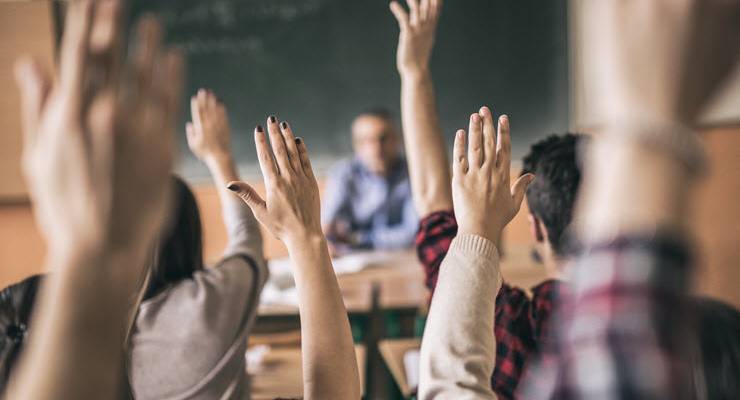
I am a health economist. But when it comes to last week’s federal budget, I really want to talk about education. Why? Because in developed countries, where clean water and sanitation are guaranteed, education is arguably the best investment in public health that can be made.
On an individual level, a good education is a fundamental determinant of health for an entire lifetime. It isn’t only about literacy and numeracy, but also about acquiring basic habits and skills: the ability to reason, emotional self-regulation and interactional abilities — all critical components of a healthy, fulfilling life. But the great thing about education are its positive externalities. Everyone, not just the child, benefits from a good education in a range of ways, including health, productivity and economic growth — a gift that keeps on giving.
Just ask Finland and South Korea. The former was named the happiest country on earth for the fifth year running, despite its long and dark winters. The latter recently surpassed Japan in GDP per capita for the first time ever, and is rapidly closing in on having the highest life expectancy in the world.
The budget was all short-run sugar hits. The few additional investments in areas that pay off over time (housing affordability and paid parental leave) are poorly designed and may end up having the opposite effect to what is intended. But any significant investment in primary and secondary education was wholly absent. The budget papers proudly declare that recurrent funding for schools will continue to increase. Well, of course it will. It always has, in order to keep pace with a growing population and prices. As percentage of GDP, however, the future increases seem a little miserly.

Money matters, but it must be spent where most needed
Does money make a difference? Yes. But more important is how it is allocated across regions, schools and students. The evidence for a causal relationship between funding and achievement is very strong, especially for disadvantaged students. A key factor, and one that’s often understated, is equity — ensuring that all children access a good education from an early age, regardless of their circumstances. A few elite schools won’t make up for lacklustre quality at the other end of the scale. We all suffer if a child misses out on a good education.
Australia seems to have a problem in this regard. We’re good at concentrating disadvantaged kids into disadvantaged schools, and it shows. Average levels of reading, mathematics and science are falling compared to other OECD countries. More importantly, the gap in outcomes is widening, with the average 14-year-old in disadvantaged suburbs showing equal or worse literacy and numeracy than 10-year-olds in more affluent postcodes.
Ten years ago the Gonski review recommended a needs-based model of funding to level the playing field and level up outcomes between schools and postcodes. In health policy this is sometimes called vertical equity — the unequal but equitable treatment of unequals.
The budget did earmark an additional “$29.4 million over 4 years from 2022‑23 to support students in regional and remote Australia”. This is a pittance, especially as recent school funding has basically done the opposite of what Gonski recommended. According to the Productivity Commission, per-student funding of private schools grew five times more than for public school students over the past decade, mostly driven by favourable Commonwealth funding (although it must be said that public school funding by some states has not kept up with inflation). Australia allocates more public money to private education than most other countries.
Public schools in NSW and Victoria are currently 15% to 20% below private schools on the Gonski-recommended resourcing standard. Unless there’s been an unprecedented influx of disadvantaged students into private schools, this is not a good trend. This isn’t putting rifle ranges and equestrian centres in public schools but about putting basic resources like teachers, books and computers, as well as adequate heating and air conditioning, where they are needed. The situation is not only shameful, it goes against our collective self-image and our interest. Helping kids achieve their potential regardless of the circumstances they’re born into is literally how you’d define a “fair go”.
The money is there, we just choose to spend it on other things
We have many emerging challenges: mental health; chronic disease; transitioning to a low-carbon, knowledge economy. Education is one of the best ways to meet these and secure our future. Underinvestment and inequity are a ticking time bomb.
It’s not the fault of this government alone. Both major parties have failed to implement the needs-based funding model when they’ve had the chance. One of the reasons was that it wasn’t possible without cutting funding to some students.
Well, it’s funny how billions can be found for all manner of things of dubious benefit: planes that can’t fly, submarines that may arrive in 30 years, a space force (I can’t even believe I typed that phrase) or handouts to wealthy retirees. Taxpayers subsidise the private health insurance industry to the tune of $10 billion a year — an investment whose public dividend is questionable.
But when it comes to educating our kids, thereby investing in our health and collective prosperity, we must rob Peter to pay Paul. Let’s hope future budgets — federal and state — start to look at this more seriously.








Crikey is committed to hosting lively discussions. Help us keep the conversation useful, interesting and welcoming. We aim to publish comments quickly in the interest of promoting robust conversation, but we’re a small team and we deploy filters to protect against legal risk. Occasionally your comment may be held up while we review, but we’re working as fast as we can to keep the conversation rolling.
The Crikey comment section is members-only content. Please subscribe to leave a comment.
The Crikey comment section is members-only content. Please login to leave a comment.